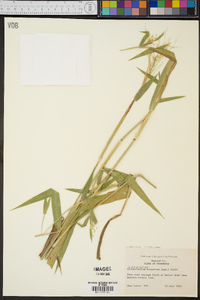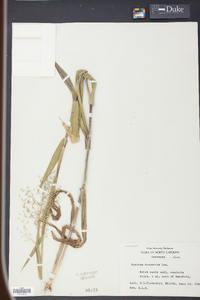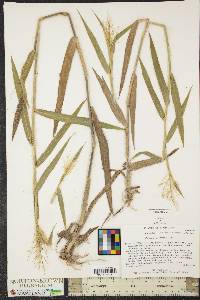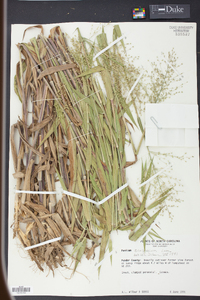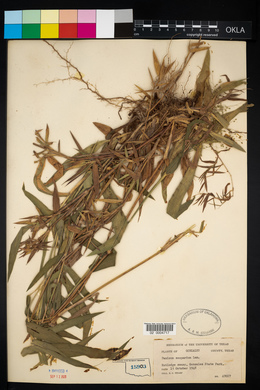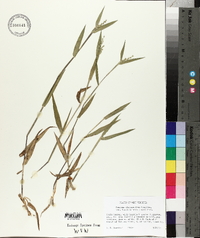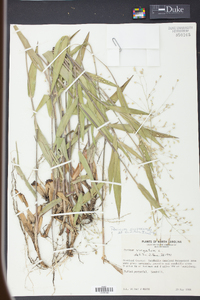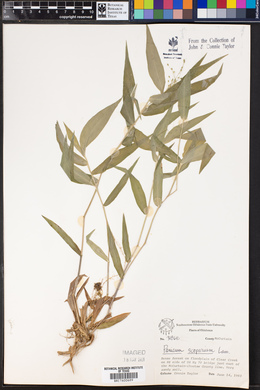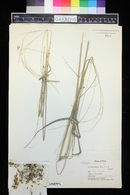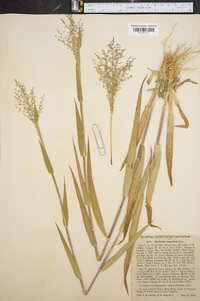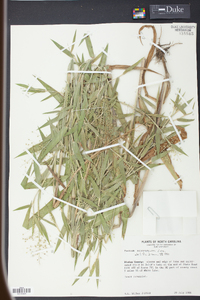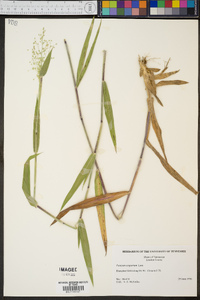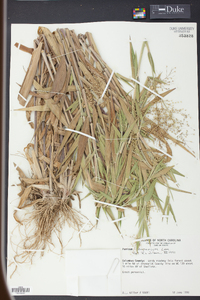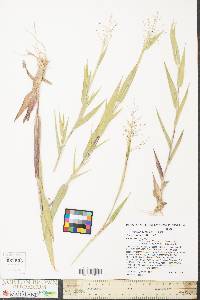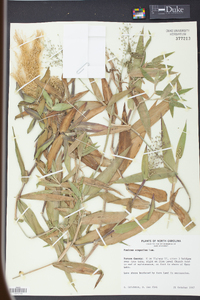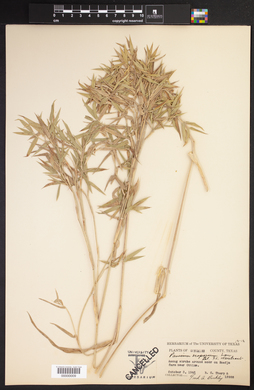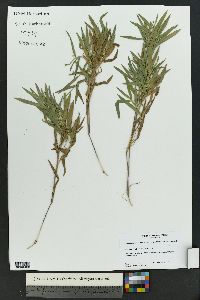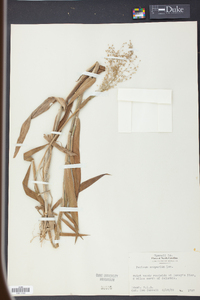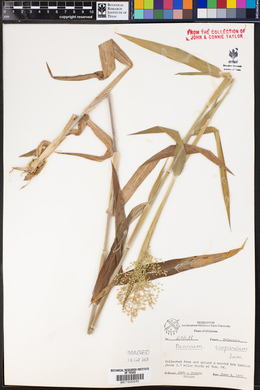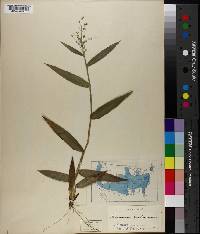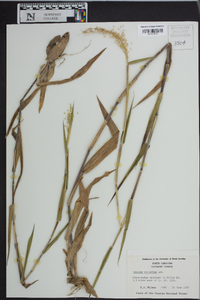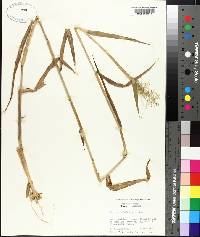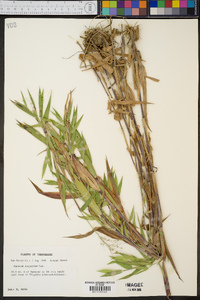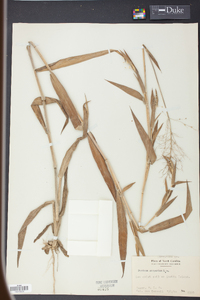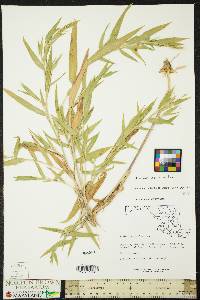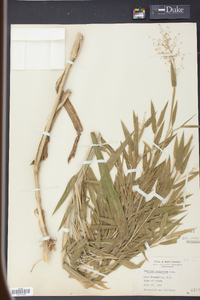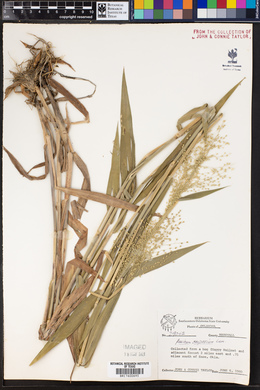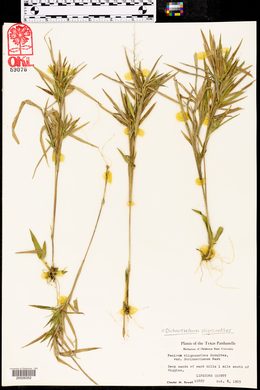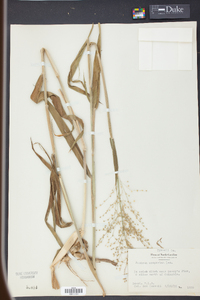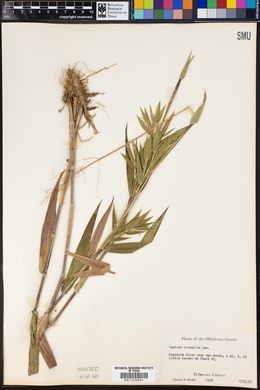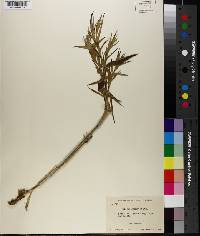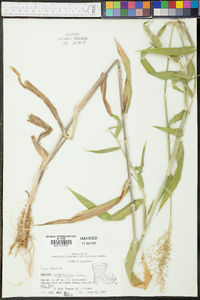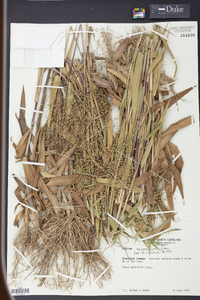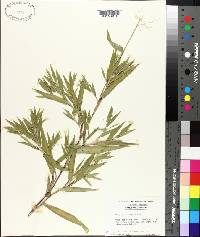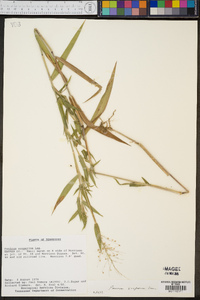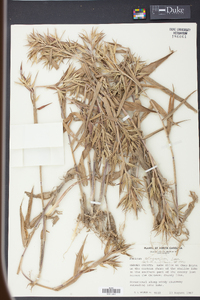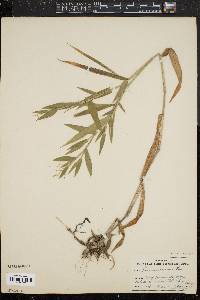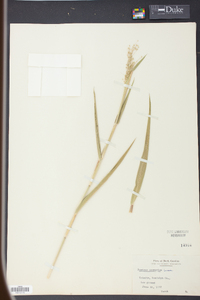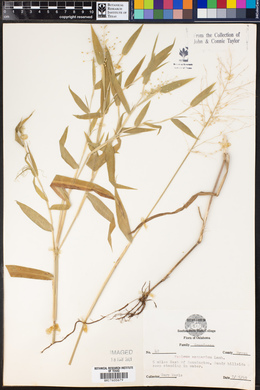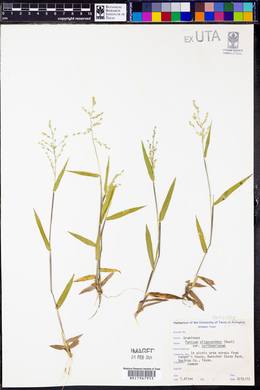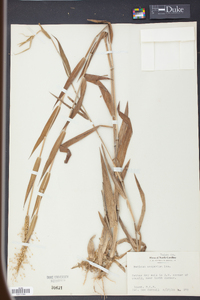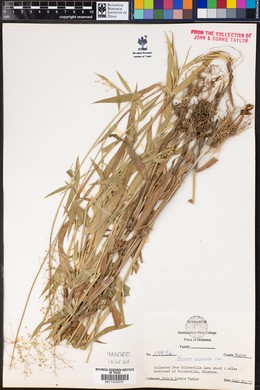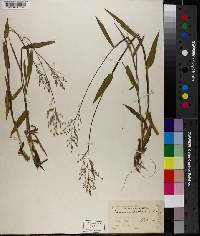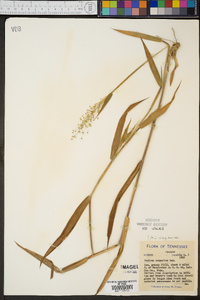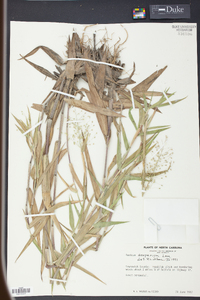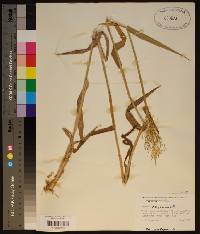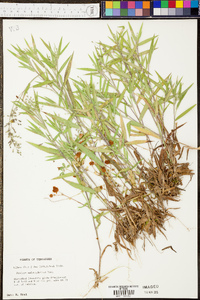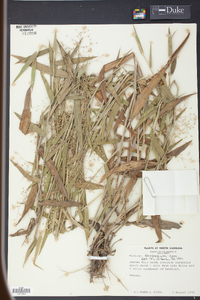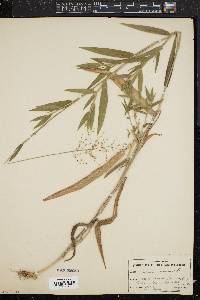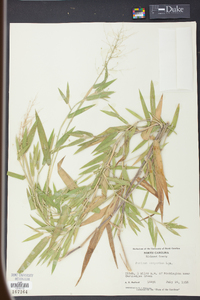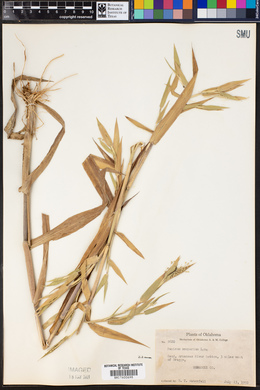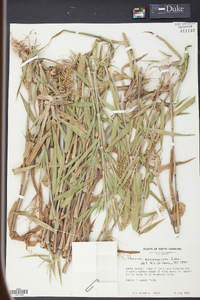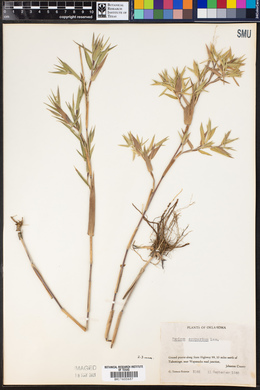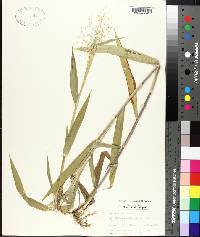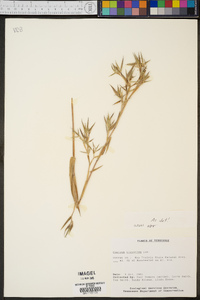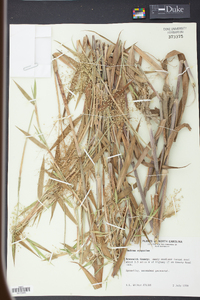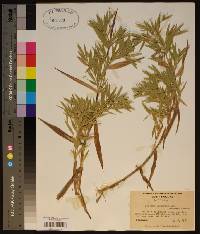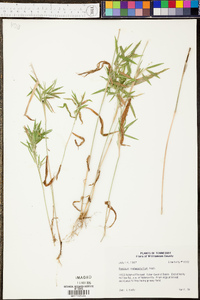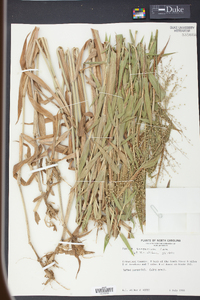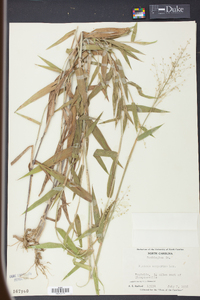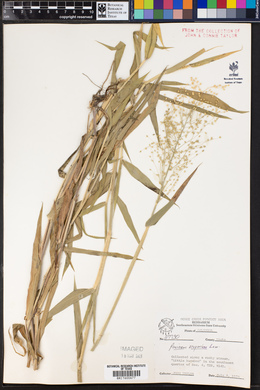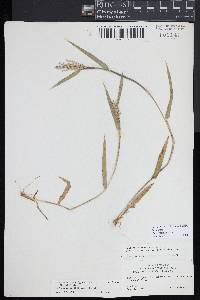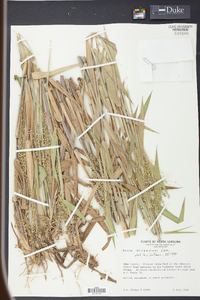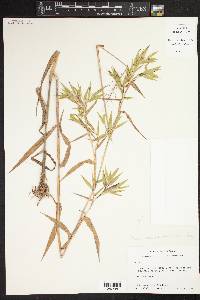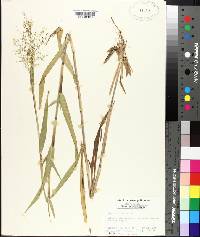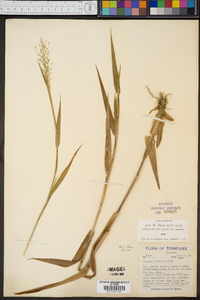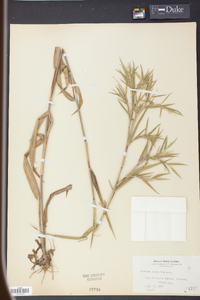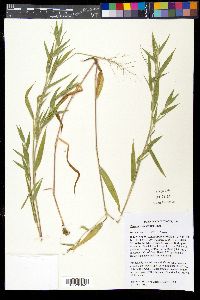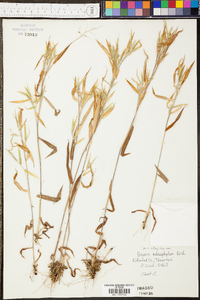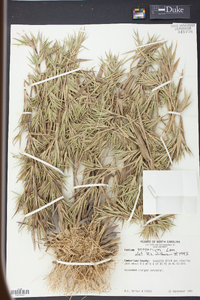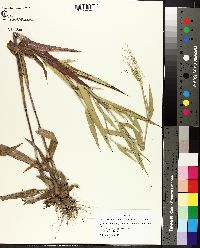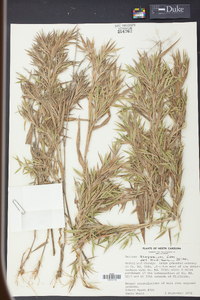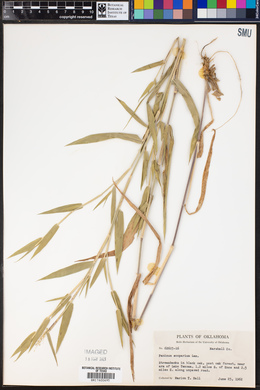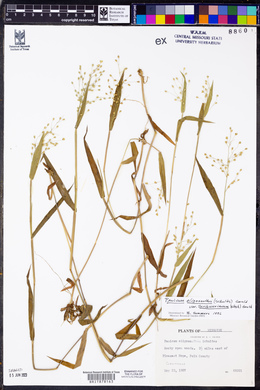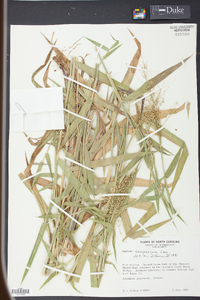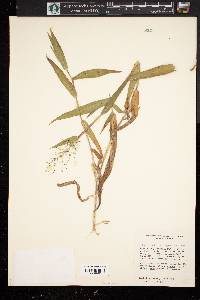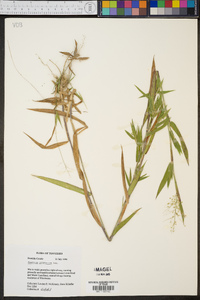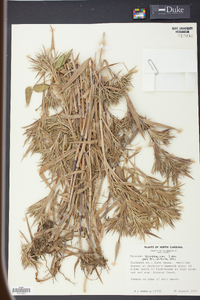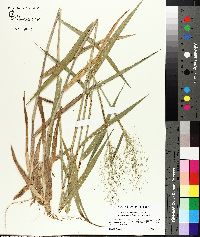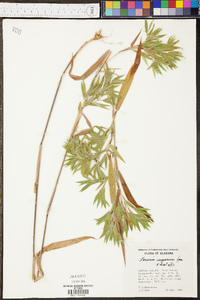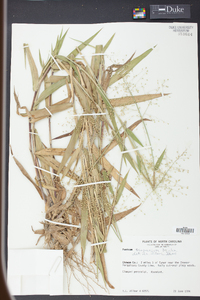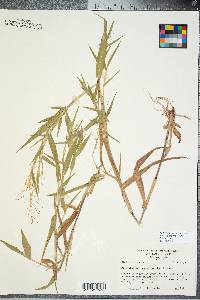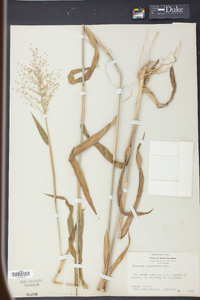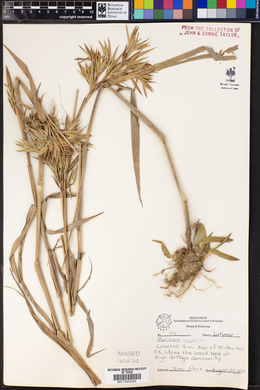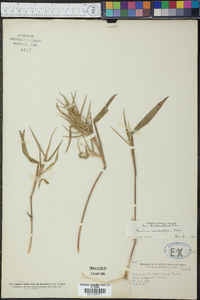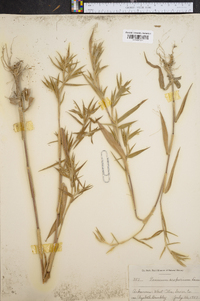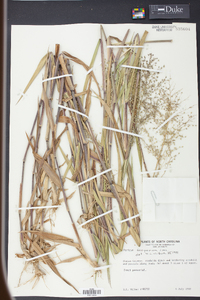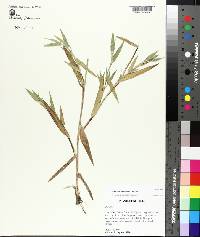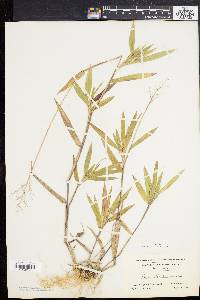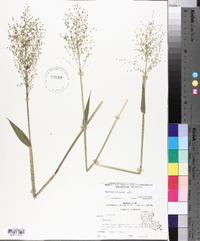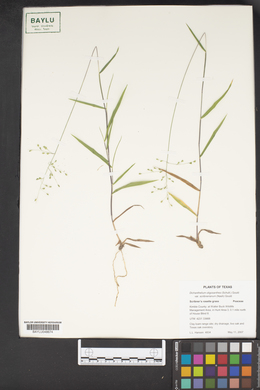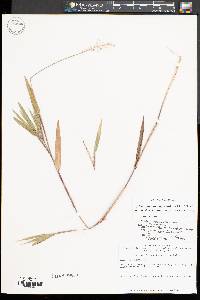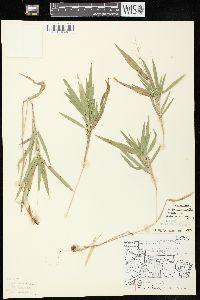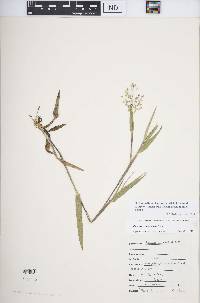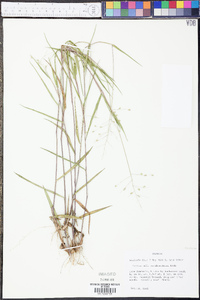Dichanthelium scribnerianum
|
|
|
|
Family: Poaceae
Scribner's rosette grass, more...Scribner's Witch Grass
[Dichanthelium oligosanthes subsp. scribnerianum (Nash) Freckmann & Lelong, moreDichanthelium oligosanthes var. scribnerianum (Nash) Gould, Panicum macrocarpon Le Conte ex Torr., Panicum oligosanthes var. scribnerianum (Nash) Fern., Panicum scoparium S. Wats. ex Nash, non Lam., Panicum scribnerianum Nash, Panicum scribnerianum var. scribnerianum] |
Culms 20-50 cm; internodes often lustrous, glabrous or sparsely papillose-hispid (rarely puberulent). Cauline sheaths often lustrous, glabrous or sparsely papillose-hispid (rarely puberulent); ligules 1-1.5 mm; blades usually 6-15 mm wide, less than 10 times longer than wide, flat, ascending to spreading, glabrous or sparsely pubescent abaxially, acute. Primary panicles denser than in subsp. oligosanthes, branches more flexible; pedicels mostly shorter than 5 mm. Spikelets usually 2.7-3.5 mm long, 2-2.4 mm wide, broadly obovoid-ellipsoid, usually glabrous. Upper glumes with a prominent orange to purplish spot at the base. Dichanthelium oligosanthes subsp. scribnerianum grows in sandy or clayey banks and prairies. Its range extends from southern British Columbia to the east coast of the United States, and south into northern Mexico. It is the most widespread of the two varieties. Perennial herb, tufted 20 cm - 0.5 m tall Inflorescence: a terminal, branched arrangement of spikelets (panicle). Primary panicles atop the culms, 5 - 9 cm long, 3 - 6 cm wide, partially enclosed to well-exserted, with six to sixty spikelets. Secondary panicles (when present) atop the branches. Fruit: a caryopsis, indehiscent, enclosed within the persistent lemma and palea. Culm: stiffly upright but knee-like basally, often purplish, shiny, 20 cm - 0.5 m long, round in cross-section, hollow, sometimes with a few bumpy-based hairs. Nodes sometimes sparsely hairy. Fall phase branching from the mid-culm nodes, rebranching and forming short clumps of leaf blades and small secondary panicles. Spikelets: 2.5 - 3.5 mm long, 2 - 2.5 mm wide, broadly ellipsoid to broadly reverse egg-shaped, swollen. Basal leaves: in a rosette. Blades few, 2 - 6 cm long, egg-shaped to lance-shaped, distinct from stem blades. Stem leaves: five to seven, alternate, two-ranked. Sheaths not overlapping, shiny, sometimes with a few bumpy-based hairs, fringed with hairs. Ligules 1 - 1.5 mm long, composed of hairs. Blades spreading to ascending, less than ten times longer than wide, 6 - 15 mm wide, lance-shaped with a rounded to truncate (cut straight across) base and pointed tip, flat, parallel-veined, sometimes sparsely hairy beneath, fringed with bumpy-based hairs basally. Glumes:: Lower glumes 1 - 1.5 mm long, pointed at the apex, strongly veined, similar in texture to upper glumes. Upper glumes strongly veined, with a prominent orange or purplish spot basally. Lemmas:: Lower lemmas similar to upper glumes. Upper lemmas longitudinally lined, shiny, with rolled-up margins above. Paleas:: Lower paleas shorter than lower lemmas, thin. Upper paleas longitudinally lined. Florets:: Lower florets sterile. Upper florets bisexual, stalkless, with a minute protuberance at the apex, plump. Anthers three. Stigmas red. Similar species: No information at this time. Flowering: late May to early July Habitat and ecology: Very common in sandy prairies. It is also found in prairies with black soil. Occurence in the Chicago region: native Etymology: Dichanthelium comes from the Greek words di, meaning twice, and anth, meaning flowering, referring to plants that may have two flowering periods. Oligosanthes means few-flowered. Scribnerianum is named in honor of Frank Lamson-Scribner (1851-1938). Author: The Morton Arboretum Culms solitary or few, erect or geniculate at base, tall and stout, 7-15 dm, with a broad viscid-glabrous band just below the nodes, otherwise softly long-spreading- hairy and with bearded nodes; sheaths loose, often constricted at the summit, densely reflexed-villous at base, softly hairy distally except along the middle of the back, where glabrous and viscid; blades lanceolate, the larger 10-25 cm נ10-20 mm, slightly narrowed to the rounded base, softly hairy on both sides; primary panicle ovoid, many-fld, 8-15 cm, softly hairy, glandular-spotted; spikelets soft-hairy, obovoid, abruptly apiculate, 2-2.7 mm; first glume two-fifths as long, triangular-ovate, acute; second glume slightly shorter than the fr and sterile lemma; autumnal phase copiously branched and rebranched from the middle and upper nodes, the blades progressively reduced and the uppermost often with the sheaths hairy throughout, the panicles small, few-fld, usually shorter than the blades; 2n=18. Wet soil; Cuba and Fla. to Tex., n. to Mo., Ky., N.C., and along the coastal plain to Mass. (Dichanthelium s.) Gleason, Henry A. & Cronquist, Arthur J. 1991. Manual of vascular plants of northeastern United States and adjacent Canada. lxxv + 910 pp. ©The New York Botanical Garden. All rights reserved. Used by permission. From Flora of Indiana (1940) by Charles C. Deam Rather frequent in the lake area where it is found in very sandy, dry soil on open dunes and sand hills and sometimes in rather dry, gravelly soil. Our specimens from the western part of the state are from sand dunes and sandy knolls. ...... Indiana Coefficient of Conservatism: C = 6 Wetland Indicator Status: FACU iagnostic Traits: Similar to D. oligosanthes, but widest leaves to 12 mm and less than 10× longer than wide; spikelets obovate, rounded at aoex. Thomas (2021) notes differences in habit (small clumps), habitat, and autumnal stage. |


